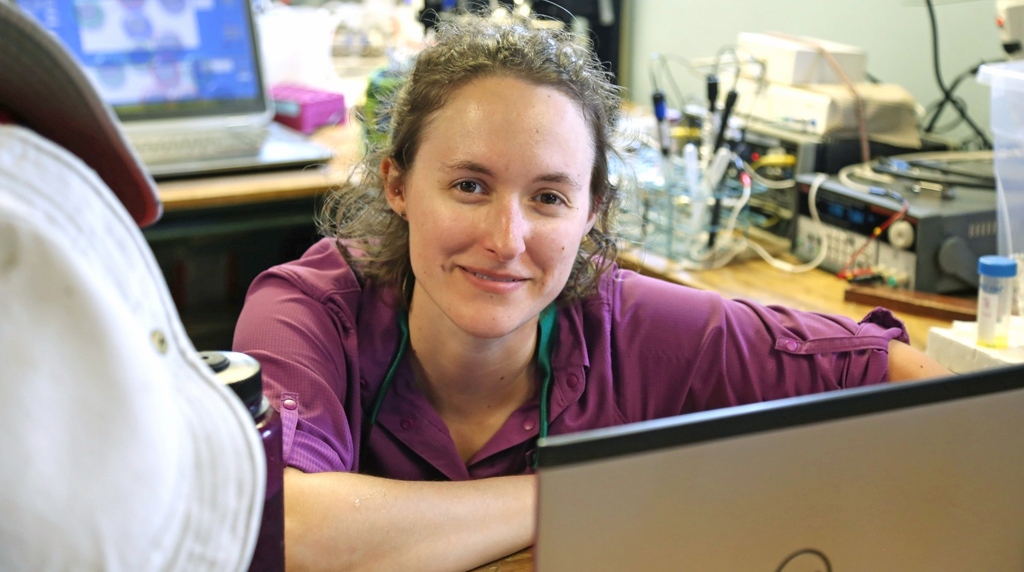February 18, 2020
Carbon cycling in the ocean is an extremely important process, and plays a large role in regulating our planet's temperature. There are many different pools and sources of dissolved carbon in our ocean, and learning more about these different pools tells researchers more about how ocean ecosystems play a role in the larger global carbon cycle. The Gulf of Mexico's carbon pools are unique compared to other ocean basins because not only is there carbon present from primary production, there is also carbon from microbial degradation of oil. When fossil hydrocarbon material (whether through human actions or natural seeps) makes its way into the ocean, it provides a unique carbon source, especially in the water column where surface primary production is generally the main carbon source to the deep ocean.
ECOGIG researchers sought to better understand the different dissolved carbon sources in the Gulf of Mexico and how the oil from the Deepwater Horizon (DWH) impacted those carbon pools, using stable and radiocarbon isotopes and mathematical modeling. They found that material from the DWH was incorporated into the organic carbon pool in the Gulf of Mexico in the 2 years following the accident (2010-2012), and then slowly recovered back to "baseline" levels, from 2012-2014. There was no existing pre-spill baseline data for dissolved organic carbon in the Gulf of Mexico, so the data from this study provides valuable post-spill baseline information. They also found that natural oil seeps play a large roll in the dissolved organic carbon pool in the Gulf of Mexico. They documented the existence of three clear and separate carbon sources in the Gulf - one driven by surface primary production, one from microbial cycling of oil and methane, and a third from riverine contribution. The study and results were recently published in the journal Elementa, available online here.


















 back to top
back to top